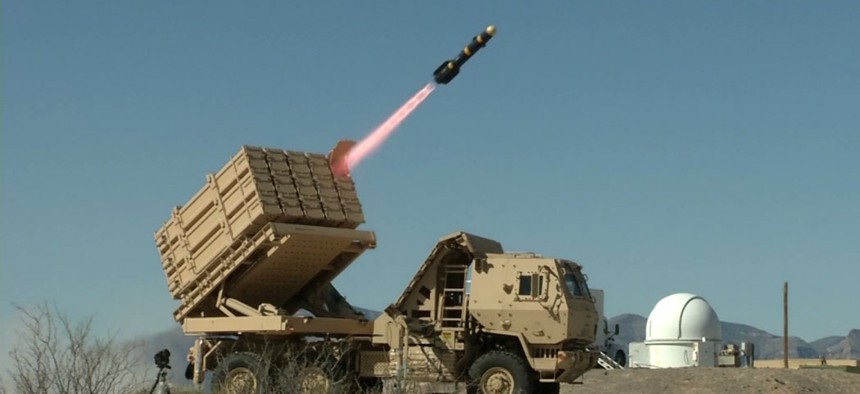Army tests networked air defense system
The integrated system combines defensive weapons for use against UAS, cruise missiles and other threats.
The changing nature of offensive threats is prompting the Army to change how it builds its air defenses, with integrated systems designed to protect against unmanned aerial systems as well as other threats such as cruise missiles.
The service recently tested a new system, currently in development, at White Sands Missile Range, N.M., designed to counter UAS, missiles, aircraft and artillery such as cannon, rockets and mortars, the Army said in a release.
That system, called the Integrated Fire Protection Capability Increment 2-Intercept, IFPC Inc 2-I, also will be networked with another system being tested at White Sands, the Army Integrated Air and Missile Defense system.
"If you go back and take a look at what has happened in terms of the threat over the last couple years you'll find that UAS systems and cruise missiles have really become a problem," said Col. Terrence Howard, program manager for Cruise Missile Defense Systems. "So we've got to introduce materiel solutions that can address multiple threats."
Howard called the approach “plug and fight,” describing the idea of networking multiple weapons systems and radars in order to address any kind of airborne threat. In the tests, the IFPC Inc 2-I had a 15-tube launcher mounted on a medium tactical truck firing a variety of missiles. Most of the tests were designed to counter cruise missiles and UAS, though the system also could take on other threats such as rockets and mortars.
The Army said it will continue tests of the system, which so far as gone from concept to prototype in a few years.
The military has been looking to defend against more sophisticated threats as its focus shifts from Iraq and Afghanistan to the Pacific. It’s also looking to defend against relatively inexpensive threats, such as drones. The Air Force and Army, for instance, have sought industry input on counter-UAS technologies, and the military has added anti-drone testing to the annual joint Black Dart exercise.
anti-drone laservehicle-based system



